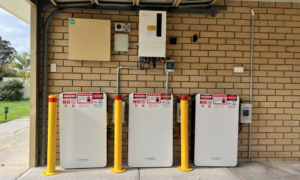India will not have to add to its current coal-based energy generation until 2027, according to a recent analysis, as long as it meets its renewable energy targets.
The Boom and Bust 2017 global coal report found a 48 per cent drop in coal plant pre-construction in 2016, a 62 per cent drop in construction starts, and a 19 per cent drop in ongoing construction.
Until now, India was bucking the trend, however there are now signs that its coal dependency is also faltering.
The Boom and Bust report found that the main reason for the slowdown in India is a reluctance of banks to invest in coal.
There is a similar sentiment in Australia. Westpac bank recently made headlines by ruling out any future investment in coal mines, including the $21.7 billion Adani Group mine in Queensland.
India’s growing drive towards renewable energy targets
As reported in April, over half (56.5%) of India’s installed power capacity will be non-fossil fuel-based renewable within 10 years.

Solar power generation capacity in India has more than tripled in less than three years to over 12 GW, helped by lower module prices and borrowing costs, and a government push to find alternate energy sources for its growing nation.
This follows on from the news that India’s Coal and Power Minister has reaffirmed that he wants to see the end of thermal coal imports into his country very soon.
Further reducing India’s reliance on imported coal is the country’s fast-tracking of solar power uptake.
3.6GW of solar power was installed throughout India in one year, with a single state achieving 1.2GW of that total.
The government set a renewables target of 175GW of installed capacity by the end of 2022.
This includes 60 GW wind power, 100GW solar power capacity, 10GW sourced from biomass and 5GW from small hydro power.
Pension funds turn to India for solar investment
Meanwhile, some of the world’s biggest pension funds are recognising India’s renewable energy ambitions.
These funds are seeking long-term returns on green investments, are scouting for deals in India’s solar power sector, according to Reuters.
Power demand in Asia’s third-largest economy is set to surge as the economy grows and more people move into the cities.
India estimates peak electricity demand will more than quadruple in the next two decades to 690GW, which would require rapid growth in generation and transmission capacity.












































